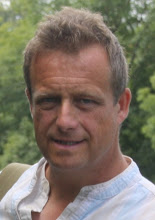
How it used to be - apart from the railings.
The west Lancashire coast used to be a narrow strip of small vulnerable towns on a sandbank/series of high dunes. I would have loved to see 'inland', a strange dark place called the Moss; fens, marsh, small island-villages and lagoons of open water. St Cuthbert's body was hidden here from the raiding Norsemen, a furtive torchlit journey by night from island village to island village. A fragile place; a strong high tide could send water surging ten or fifteen miles 'inland', and in the ugly 1970s suburb of Marshside I could still see the 'cops', a local word for earthen sea defences. (Got me interested now - I will try and find some of my Mosswalking notes and upload them.)
And I could see a version of this waterscape from the apartment window. I once managed to photograph a room that was no longer there, a corner forgotten beneath a bathroom; I will try and find this as well! The past is all around us and occasionally visible.

